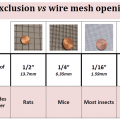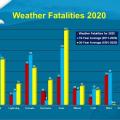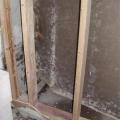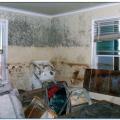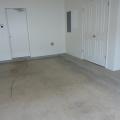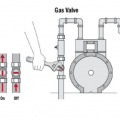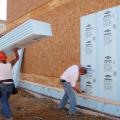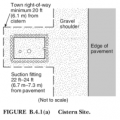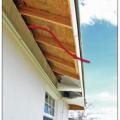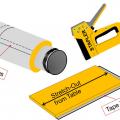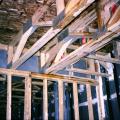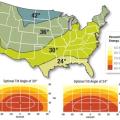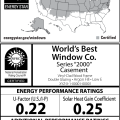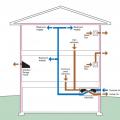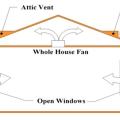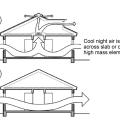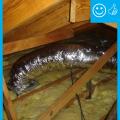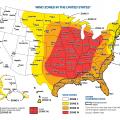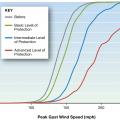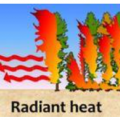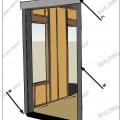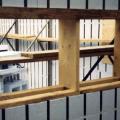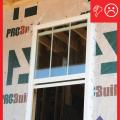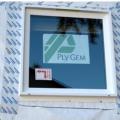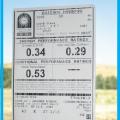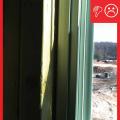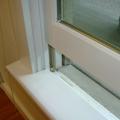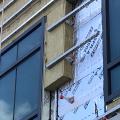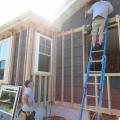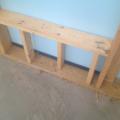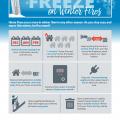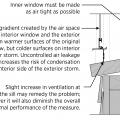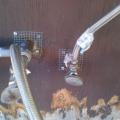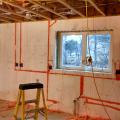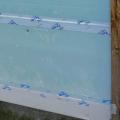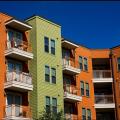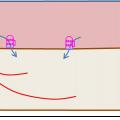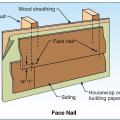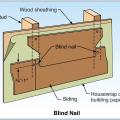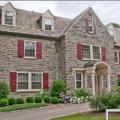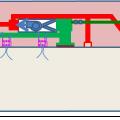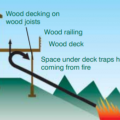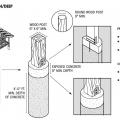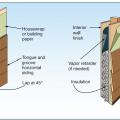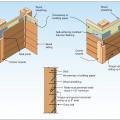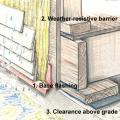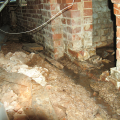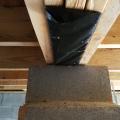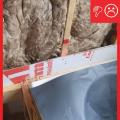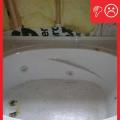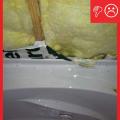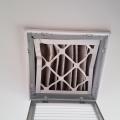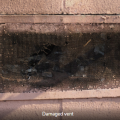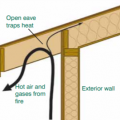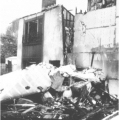Showing results 4301 - 4400 of 4973
When adding an addition to an existing home, the new construction must meet current code.
When architects and builders think of the house as a systems, all of the parts are designed to work together for a healthy, durable home that minimizes builder callbacks while cutting energy, maintenance, and repair costs down the road.
When averaged over several years, more fatalities are caused by extreme heat than by any other weather-related hazard
When condensation forms on the interior side of wall sheathing and is not able to dry out, it can lead to mold growth and rotting of wall sheathing and framing
When flood waters reach living areas, the resulting mold and contamination can greatly increase clean up time and costs.
When HVAC systems are installed in enclosed garages, it is preferable that the equipment is located within an air-sealed room that is connected to the conditioned space.
When installing fasteners in roof sheathing, common mistakes include using the wrong size fasteners, missing the framing members, overdriving nails, and using too many or too few fasteners.
When moisture is trapped inside walls, mold can grow unchecked, causing damage to the walls and health impacts for the occupants.
When no automatic gas shutoff valve is installed at the meter, the gas valve can be shut off using a wrench
When preserving a tree, construct a temporary fence around the tree canopy and post signs to keep out vehicles that might compact soil and construction waste that could contaminate the soil.
When rigid foam insulation is applied to the exterior side of the wall cavity under the cladding, with seams taped and an air gap provided, it acts as a vapor barrier, air barrier, and rain screen.
When the EIFS siding on this house gave way in high winds, it revealed severe rotting of the sheathing beneath the windows due to long-term water leakage.
When the lower break-away wall gave way in coastal flooding it peeled some of the EIFS siding off with it because there was no suitable break in the siding to allow it to detach cleanly.
When the soffits blew away in 140 to 160 mph hurricane winds, wind-driven rain was allowed to enter the attic.
When using I-joists, make sure to fill in the gaps on each side of the blocking material to air-seal the joist bay where a wall separates conditioned and unconditioned spaces.
When wiring is installed in ICF walls, openings made for wire runs should be air-sealed with caulk.
When wrapping metal ducts with insulation allow two inches of overlap and staple along the seam with outward clinching staples
Where the interior wall intersects the corridor wall in this multifamily building, the first intersecting wall stud is sealed to the corridor wall along both sides; other seams and penetrations in the exterior wall are also sealed
Where the optimal tilt angle for PV panels is 30°, if the roof is facing due south, the tilt angle (roof pitch) can vary 0° to 60° or roof direction can vary up to 65° to east or west and the roof can still collect 90% to 100% of available solar energy.
While windows typically make up only 7% of the total envelope area of a home, they are responsible for 48% of its heat loss
White walls and roofs; overhangs and awnings; and operable shutters and garden walls all help to keep out unwanted solar heat gain providing cool interiors for this Florida home.
Whole house fans draw cool night-time air in through open windows and expel hot house air into the vented attic
Whole-house fans draw outside air through windows into the home and exhaust it into a vented attic
Whole-house fans operate when it is cooler outside than inside to exhaust hot air from the house and replace it with cooler outside air.
Whole-house fans or wind-driven cross ventilation can be used to draw air across thermal mass for a night flush strategy
Wide saddle support provides sturdy support for the turn without pinching the flex duct
Wildfires across the United States claimed 10.12 million acres and 17,904 structures, including 9,700 homes in 2020
Wind path and uplift force for a gabled roof, a hip roof, and a pyramidal (another variant of a hip) roof design
Wind path and uplift force for gable ended roof, hip roof, and pyramidal (another variant of a hip) roofs
Windblown embers and firebrands are the most common cause of structural fires in wildfires, followed by fires started by radiant heat igniting surfaces or breaking windows and allowing embers in, followed by direct flame contact
Window and door rough openings in the ICF wall are surrounded with pressure-treated wood
Window attachments like insulated blinds, solar screens, and low-e storm windows provide many benefits including heating and cooling savings at a low first cost
Window coverings like insulated blinds, cellular shades, sun-blocking roller shades, and low-e storm windows can provide heating and cooling energy savings
Window Detail: Framed Wall with Plywood or OSB Sheathing, a WRB, and Siding (Wood, Fiber Cement, Aluminum, or Vinyl)
Windows are installed as “outies” in this wall assembly using a self-adhered membrane water and air control layer with continuous exterior insulation
Windows are installed in new framing in preparation for adding exterior spray foam insulation
Windows are sized and positioned so only one king stud is needed on each side of the window.
Winter storms can cause power outages while prolonged winter weather can take a toll on building structures
Wintertime condensation potential for exterior storm windows can be reduced if the original window is airtight and weep holes in the storm window are open to provide a small amount of ventilation to the outside
Wire hardware mesh is fastened with a staple gun and screws to the wall to prevent pests from entering the building through small holes and cracks
Wiring runs are covered with canned spray foam to maintain the continuous foam layer that covers the inside and outside of these ICF block walls.
With balconies in multifamily buildings, it is important to establish correct structural attachment while also providing insulation in a way that minimizes thermal bridging where the balcony attaches to the building
With fiber cement siding, face nail rather than blind nail where the design wind speed is ≥100 mph.
With fiber cement siding, place blind nails 3/4 to 1 inch from top edge and > 3/8 inch in from butt ends.
With modern low-E storm windows, manufacturers offer many frame colors and the option for custom color matching
With the nailed block method, wood blocks are attached to the sill plate and the cripple wall plywood is attached to the block to provide shear strength for correctly bracing a cripple wall in a seismic retrofit
With very few roof penetrations and a simple design, the south-facing roof provides ample space for solar panels for this net zero home.
Without an exhaust fan ducted to the exterior, particles resulting from cooking can accumulate on walls and ceilings, and will be present in the air where they can damage occupants' respiratory systems
Wood blocking for future PV panel installation is installed in the layers of polyisocyanurate rigid foam insulation during a flat roof retrofit
Wood decks that extend over vegetated slopes are very vulnerable to ignition by approaching wildfires.
Wood siding installation details to improve resistance to wind-driven rain at corners.
Wrap batt insulation around pipe loosely enough not to compress the insulation and secure with wire or tape
Wrong - House wrap was poorly installed, seams were not taped, and flashing tape was not installed around windows.
Wrong - A typical vented crawlspace in North Carolina exhibits water leakage, poor drainage, and a low-quality vapor retarder that does not cover all of the ground surface and is not sealed to the walls.
Wrong - A vapor barrier should cover the top of the concrete block pier support in the crawl space.
Wrong - Air conditioning compressor unit should be sitting on concrete pad installed directly on ground.
Wrong - Air filter was compressed and may not function effectively to filter return air.
Wrong - Air leakage from the conditioned space to the basement foundation wall can lead to condensation or moisture issues in a conventional blanket insulation installation.
Wrong - Airborne embers can float into holes in damaged vent screens and ignite flammable items in the house or accumulated debris in the vent.
Wrong - An open eave with no soffit covering can trap rising hot air and embers from a wildfire.
Wrong - An unbraced water heater in this home fell during an earthquake; the resulting fire destroyed the home.
